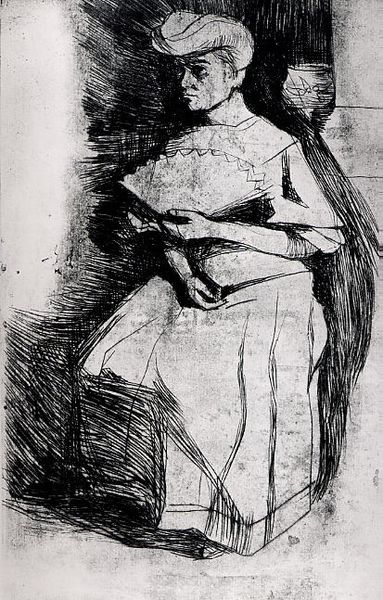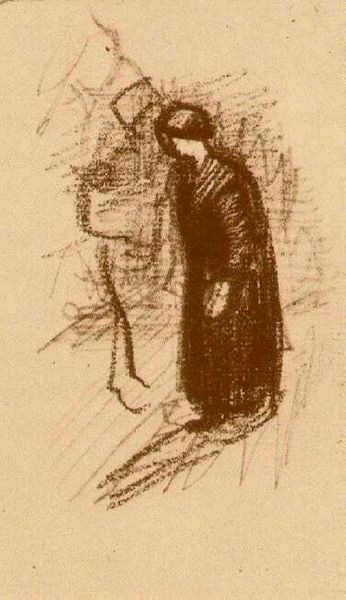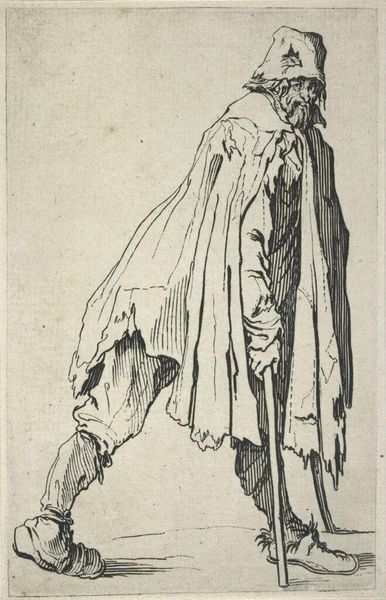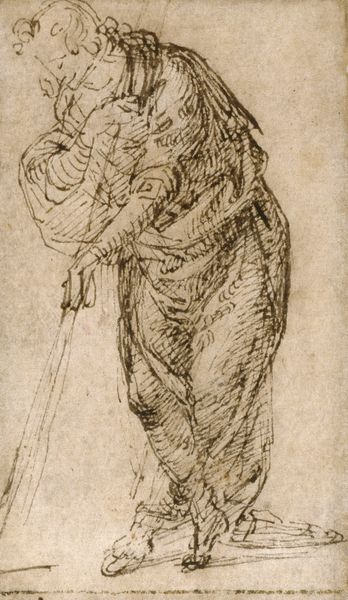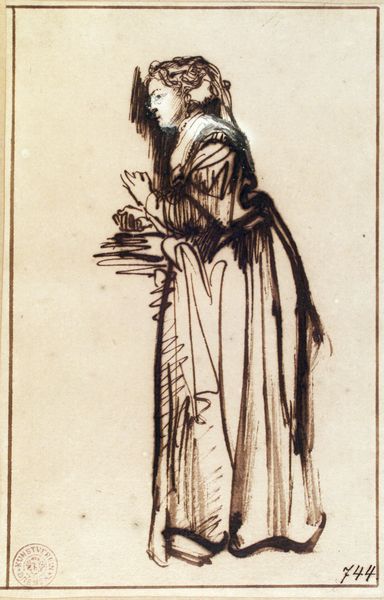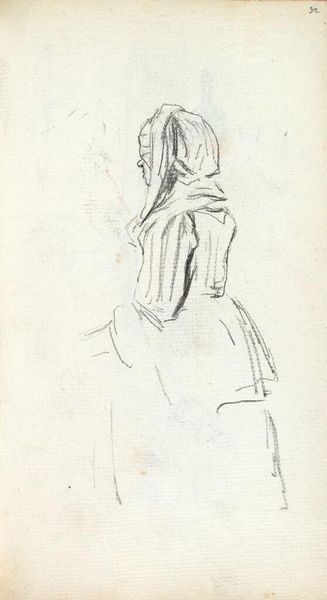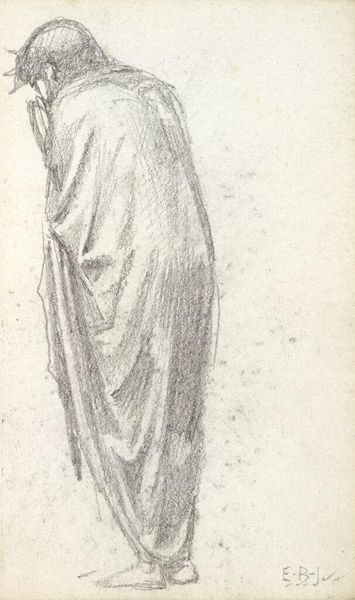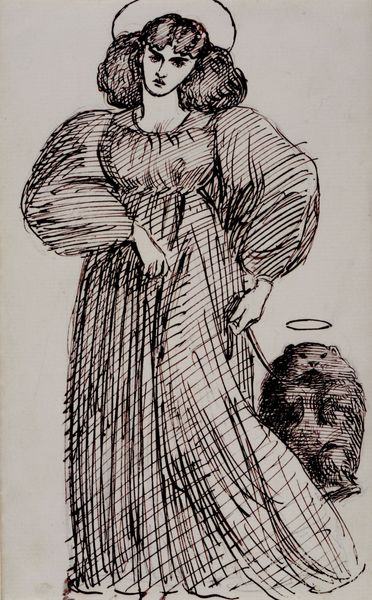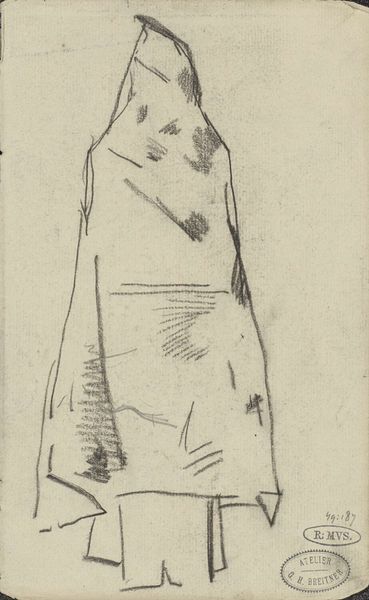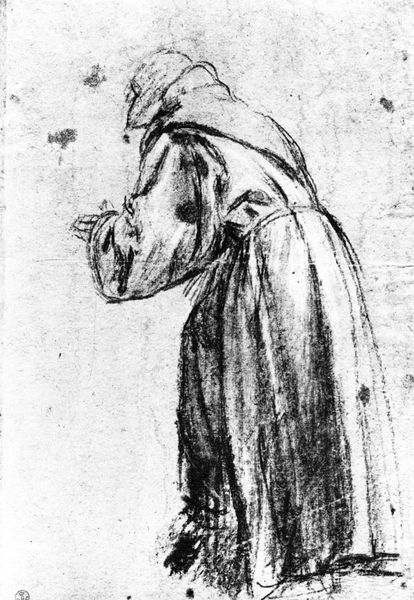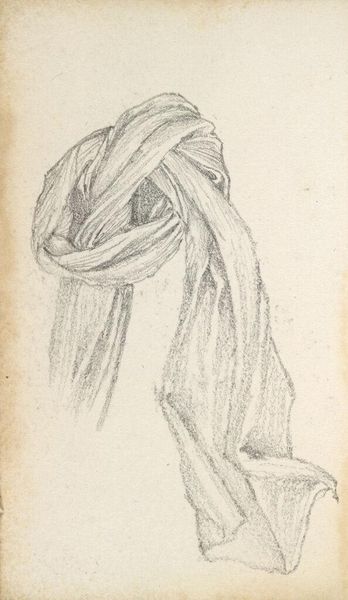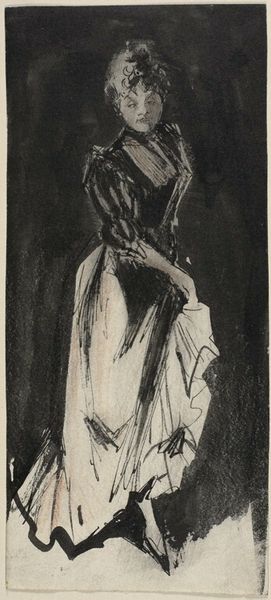
drawing
#
portrait
#
drawing
#
figuration
#
sketch
#
expressionism
Copyright: Public domain
Vincent van Gogh made this drawing, Woman Standing, sometime in the 1880s, using a reed pen and ink on paper. It's a study of a working-class woman, and it reflects Van Gogh's deep concern with the lives of ordinary people, especially laborers and peasants. We see this particularly during his Dutch period. The pose is humble, the woman appears to look downward, and the quickly drawn lines emphasize her simple clothing. Van Gogh was interested in depicting the realities of working-class life, diverging from the academic conventions of his time. Instead of idealizing his subject, he presented her with a raw, unvarnished honesty. In its time, this may have been viewed as challenging the established social norms of the art world. By studying Van Gogh's letters and the social history of the Netherlands during the 19th century, we can understand how this artwork comments on the social structures of its time. The meaning of art is contingent on its social and institutional context.
Comments
No comments
Be the first to comment and join the conversation on the ultimate creative platform.
